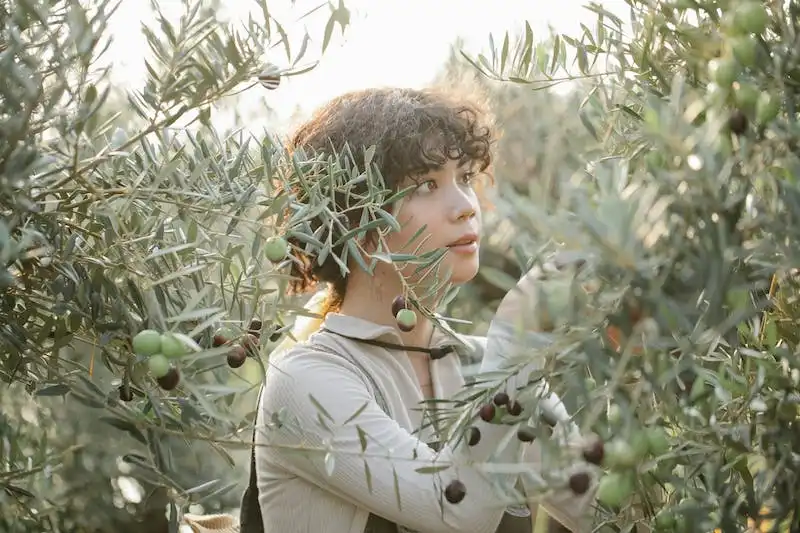The String of Pearls, also known as Senecio rowleyanus, is a popular succulent plant that has become a favorite among plant enthusiasts for its unique trailing vines and eye-catching bead-like leaves. However, caring for this plant can be a bit of a challenge, as it requires specific conditions to thrive. In this article, we will discuss the proper care and maintenance of String of Pearls plants, as well as common mistakes to avoid that may lead to their demise.
One of the most important factors to consider when caring for String of Pearls is temperature. These plants thrive in temperatures between 70-80°F (21-27°C), making them ideal for indoor environments. However, extreme temperature changes can cause the leaves to shrivel and turn brown. It is important to keep the plant in a bright, but not direct, sunlight, as too much exposure can also lead to leaf damage.
Another reason why String of Pearls plants may not survive is improper watering. These plants do not tolerate overwatering, as it can lead to root rot and eventual death. Conversely, underwatering can cause the leaves to become wrinkled and shriveled. It is recommended to water String of Pearls thoroughly, allowing the soil to completely dry out between waterings. Additionally, it is best to use a well-draining soil mix that includes perlite, as this will prevent moisture retention.
When it comes to propagation, String of Pearls can be easily propagated through cuttings. Simply cut a healthy vine near the crown of the plant, making sure to leave at least 3-4 leaf nodes intact. Allow the cutting to dry for a few days before placing it in a well-draining soil mix. Mist the soil lightly to provide some moisture, but be careful not to overwater. Within a few weeks, the cutting should begin to sprout roots and new growth, signaling successful propagation.
Lastly, String of Pearls plants are not without their share of pests and issues. Mealybugs and aphids are the most common pests that can infest these plants, causing damage to the leaves and overall health. To remove these pests, dip a cotton swab in rubbing alcohol and gently wipe them off the plant. In terms of issues, over time, the vines can become leggy and bald at the base, leading to a less appealing appearance. To prevent this, regularly trim the vines and propagate new cuttings to keep the plant looking full and healthy.
In conclusion, with the proper care and attention, String of Pearls plants can thrive and bring joy to any space. By maintaining optimal temperature levels, watering correctly, providing proper lighting, and addressing any pest or issues promptly, these plants can live for many years and continue to be a showy and attractive addition to any succulent collection.
How to Grow and Care for a String of Pearls Plant the Vining Succulent That Looks Like a Necklace
A String of Pearls plant, also known as Senecio rowleyanus, is a vining succulent that looks like a necklace made of small, round, green “pearls.” Growing and caring for this unique succulent is a rewarding experience. Here are some tips on how to do it successfully:
Growing from Cuttings: If you want to propagate your String of Pearls plant, you can take cuttings. Simply snip off a small section of the string-like stems with a clean, sharp pair of scissors or pruning shears. Make sure each cutting has at least a few pearls attached.
Shaped for Best Appearance: The String of Pearls plant looks best when it is shaped like a hanging necklace. To achieve this look, hang the plant in a location where its stems can cascade down and create a beautiful display. Consider using a hanging basket or macramé plant hanger for this purpose.
Images for Happy Plants: String of Pearls plants are happiest when they receive bright, indirect light. A location near a window that allows filtered sunlight is ideal. Avoid placing your plant in direct sunlight, as this can cause leaf burn and discoloration.
Grows in Warm Conditions: Succulents, including the String of Pearls, thrive in warm temperatures. Aim to keep your plant in an environment where the temperature ranges from 70 to 85 degrees Fahrenheit (21 to 29 degrees Celsius). Avoid exposing the plant to temperatures below 60 degrees Fahrenheit (15 degrees Celsius), as it may suffer damage.
Takes Shape with Proper Potting: Choose a well-draining potting mix for your String of Pearls plant. A mixture of regular potting soil and sandy soil works well. Make sure the pot has drainage holes at the bottom to prevent overwatering, which can cause root rot and other issues.
Pro Tip: When watering your String of Pearls, it’s best to do it sparingly. Succulents like this plant store water in their leaves and stems, so they can survive periods of drought. Water your plant deeply and allow the soil to dry out between waterings. A typical watering schedule for a String of Pearls plant is once every 2-3 weeks, or when the soil is completely dry.
Morning Watering: Watering your String of Pearls in the morning is recommended, as it allows any excess moisture to evaporate during the day. Avoid watering in the evening, as this can create a damp environment that may promote fungal growth and cause root rot.
Oh, Your Shape, My Pearls: One of the challenges with growing a String of Pearls plant is maintaining its round, pearl-like shape. The plant tends to elongate over time, especially if it lacks sufficient light. You can trim or prune the plant to maintain its desired shape. Consider cutting back the longer stems to encourage new growth and a fuller appearance.
Sandy Soil’s the Best: String of Pearls plants prefer well-draining soil with a sandy texture. A mixture of regular potting soil and sandy soil provides the ideal growing medium. This type of soil allows excess water to drain away quickly, preventing root rot and other issues.
Rootbound Concerns: If you notice that your String of Pearls plant has become rootbound, it’s time to repot it. This happens when the plant outgrows its current pot and its roots start entangling in a tight ball. Carefully transfer the plant to a slightly larger pot, taking care not to damage its delicate roots.
Pro Tip: Senecio rowleyanus plants are slow-growers, so they typically don’t require frequent repotting. Repotting every 2-3 years should be sufficient.
Why Yellow Pearls?: If you find that some of the pearls on your String of Pearls plant are yellow or discolored, it may be a sign of stress or infection. Examine the plant closely to determine the cause. Overwatering, inadequate lighting, or infection by pests or disease can all cause discoloration. Address the underlying issue to restore your plant to its happy, green state.
Blooming Hopes: Although String of Pearls plants are not known for their showy flowers, they do produce small, white blooms under the right conditions. To encourage blooming, provide your plant with ample bright, indirect light and regular doses of all-purpose indoor plant fertilizer. Keep in mind that blooming is more likely in mature plants that are well-established and healthy.
Closeup: If you want to get a closer look at your String of Pearls plant, gently touch its pearls. These bead-like structures are actually modified leaves that store water. They are smooth and slightly translucent, giving them a unique appearance. Admire their beauty but avoid touching them too frequently, as excessive handling can damage the delicate pearls.
Pay Attention to the Roots: When caring for your String of Pearls plant, pay attention to its roots. Over time, the roots may grow through the drainage holes at the bottom of the pot or become rootbound. Regularly check the roots and provide the necessary care to ensure your plant’s overall health.
That’s a Wrap: Now that you know how to grow and care for a String of Pearls plant, you can enjoy having this unique vining succulent in your home. With its delicate cascading stems and pearl-like foliage, it’s sure to be a standout addition to your plant collection. Happy growing!
How to Grow String of Pearls
If you want to grow a healthy and beautiful String of Pearls plant, here are some steps to follow:
1. Choosing the right potting soil:
The String of Pearls plant prefers well-draining soils, so it is best to use a potting mix specifically designed for succulents. You can also create your own mix by combining regular potting soil with a little sand or perlite to improve drainage.
2. Providing the right amount of sunlight:
String of Pearls plants thrives in bright, indirect sunlight. Place your plant near a window where it can get a few hours of sunlight each day. Avoid direct sunlight, especially during the hottest hours of the day, as it can scorch the leaves.
3. Watering appropriately:
One of the biggest reasons for the death of String of Pearls plants is overwatering. Allow the soil to dry out completely between waterings. When you do water, thoroughly soak the soil until water drains out from the bottom of the pot. Avoid leaving the plant sitting in standing water as it can lead to root rot.
4. Providing the right humidity and temperature:
String of Pearls plants prefer moderate humidity and temperatures between 60-85°F (15-29°C). They can tolerate slightly cooler temperatures, but avoid extreme cold or freezing temperatures.
5. Propagating String of Pearls:
If you want to propagate your String of Pearls plant, there are a few methods you can try. One popular method is to take stem cuttings and place them in water or directly in well-draining soil. Another method is to take cuttings from the pods that form along the stems and plant them directly in soil.
6. Providing the right nutrients:
String of Pearls plants do not require a lot of fertilizer. You can feed them with a balanced houseplant fertilizer once a month during the growing season. Alternatively, you can use a diluted solution of liquid seaweed or fish emulsion.
7. Repotting when necessary:
If your String of Pearls plant outgrows its current pot, it may need to be repotted. Repotting is best done in the spring or early summer. Use a pot that is slightly larger than the current one and fill it with fresh potting soil. Be gentle when handling the delicate stems to avoid breakage.
8. Keeping pests at bay:
Pests like mealybugs and spider mites can be a common problem for String of Pearls plants. To keep them away, regularly inspect your plant for any signs of infestation. If you notice any pests, you can use a mild insecticidal soap or neem oil to treat the infested areas.
By following these steps, you can grow and maintain a healthy String of Pearls plant that will bring beauty to your indoor space.




